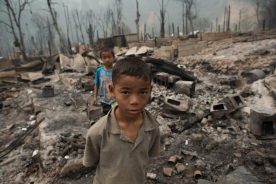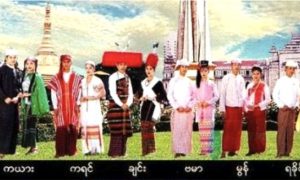Writing about the Thai–Burma border as it existed in the mid-1980s, Martin Smith evokes a thriving black market: a thousand cattle splashing across the Moei River in a single day, and radios, watches, sarongs, and manufactured goods flooding from relatively prosperous Thailand into Ne Win’s Burma. Taxes levied on this cross-border trade kept the Karen insurgency alive, providing the Karen National Union (KNU) with the income required to train soldiers and administer the territory they controlled on Burma’s southeastern border. Thai authorities remained wilfully blind to this trade, choosing amid the Cold War to see the KNU as a buffer between themselves and socialist Burma.
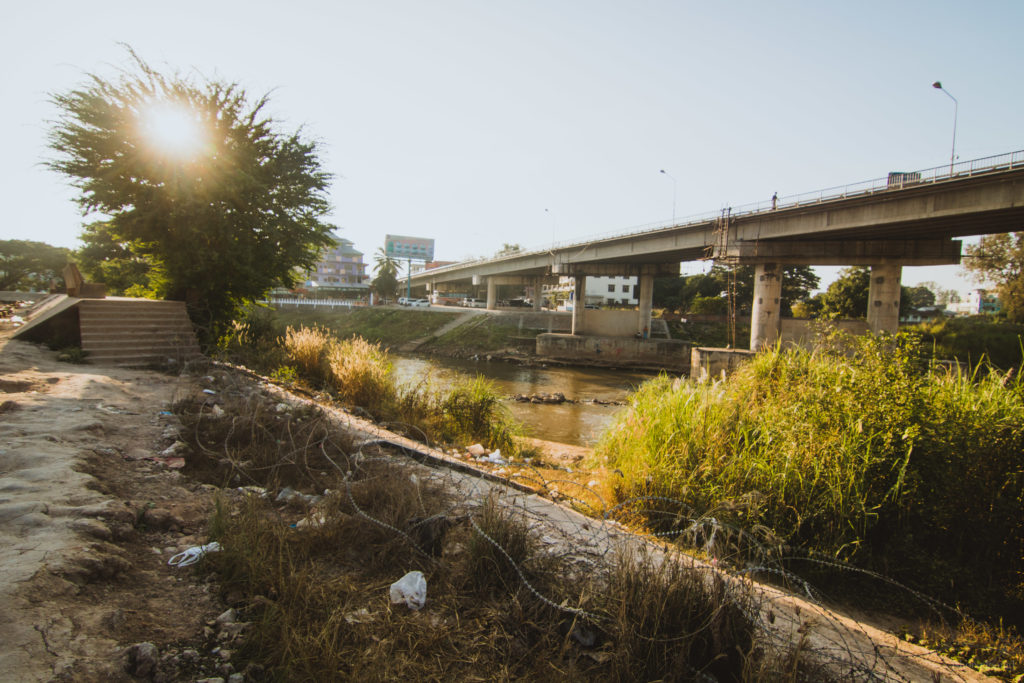
The Thai–Myanmar Friendship Bridge over the Moei River.
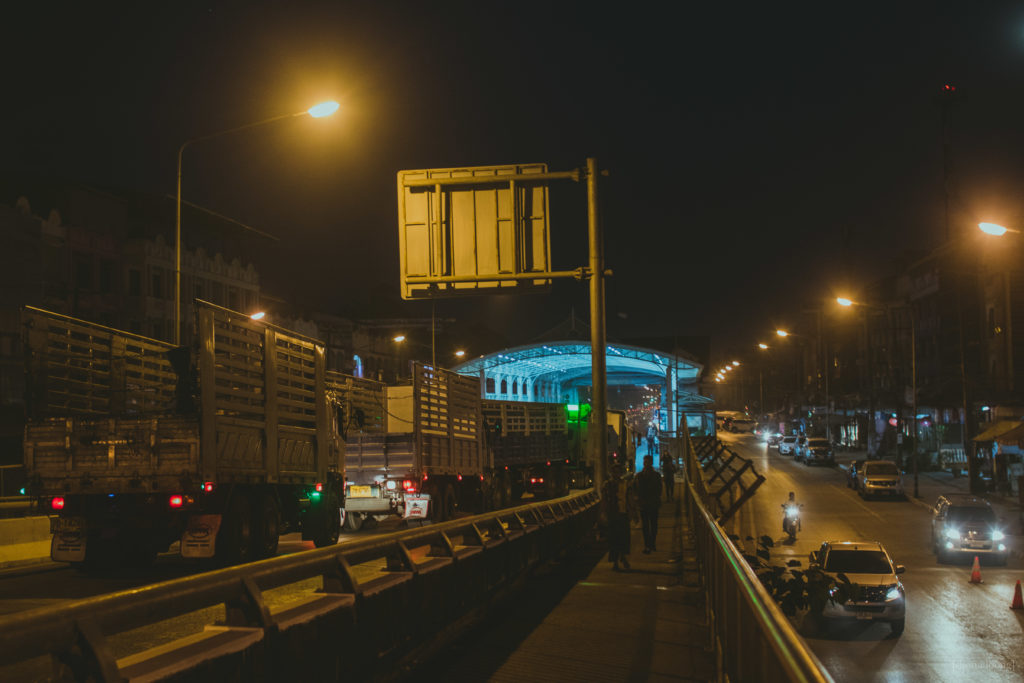
Trucks enter Thailand over the Thai-Myanmar Friendship Bridge.
What a far cry from the way the border looks today. Sitting in an air conditioned café nestled between glassy showrooms in late 2016, I watch large vehicles hurtle towards the Thai–Myanmar Friendship Bridge. The bridge is integral to the Asian Highway, a massive infrastructure project funded by the Asian Development Bank and the Thai government that is intended to connect Myanmar to the whole of mainland Southeast Asia. The vehicles I am looking at will drive up to checkpoints on the Thai side of the border before cutting through rural areas of Myanmar, once the sites of bloody counterinsurgency campaigns waged by the Tatmadaw, in order to arrive in ports on the other side of the continent.
In both its name and its formidable presence across the river boundary, the Friendship Bridge symbolises the ever-closer ties between the Thai and the Myanmar governments—and the enormous profits both parties stand to gain from this partnership. The KNU, on the other hand, signed a ceasefire in 2012 after having lost most of its territory in the preceding two decades, thereby opening up its territory to profit-driven interests in Thailand, Myanmar, and beyond.
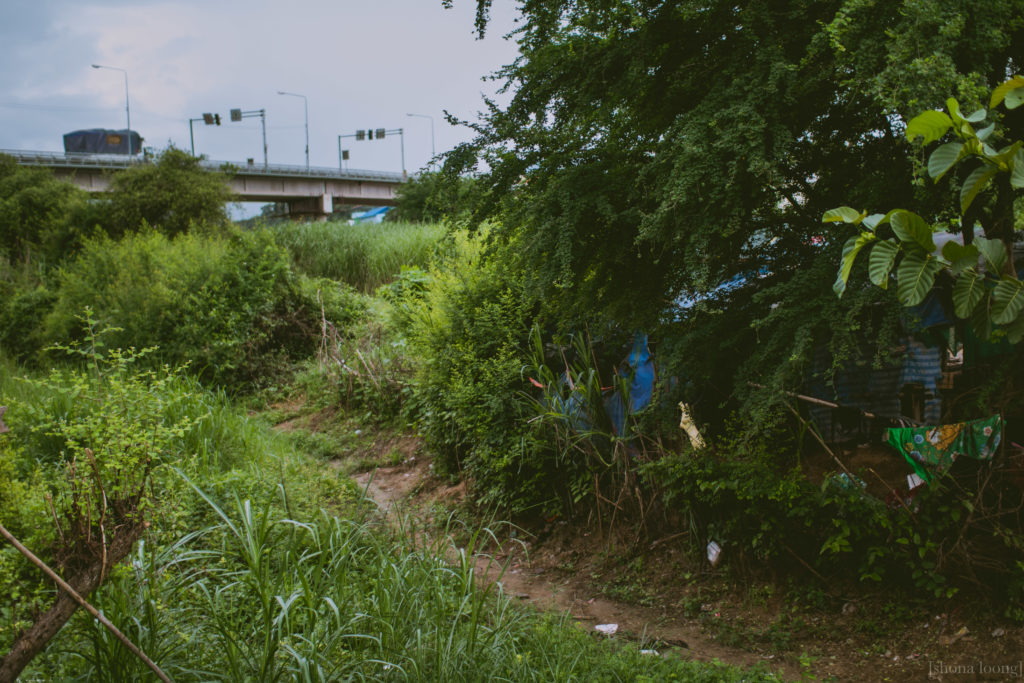
A migrant settlement beneath the Thai–Myanmar Friendship Bridge.
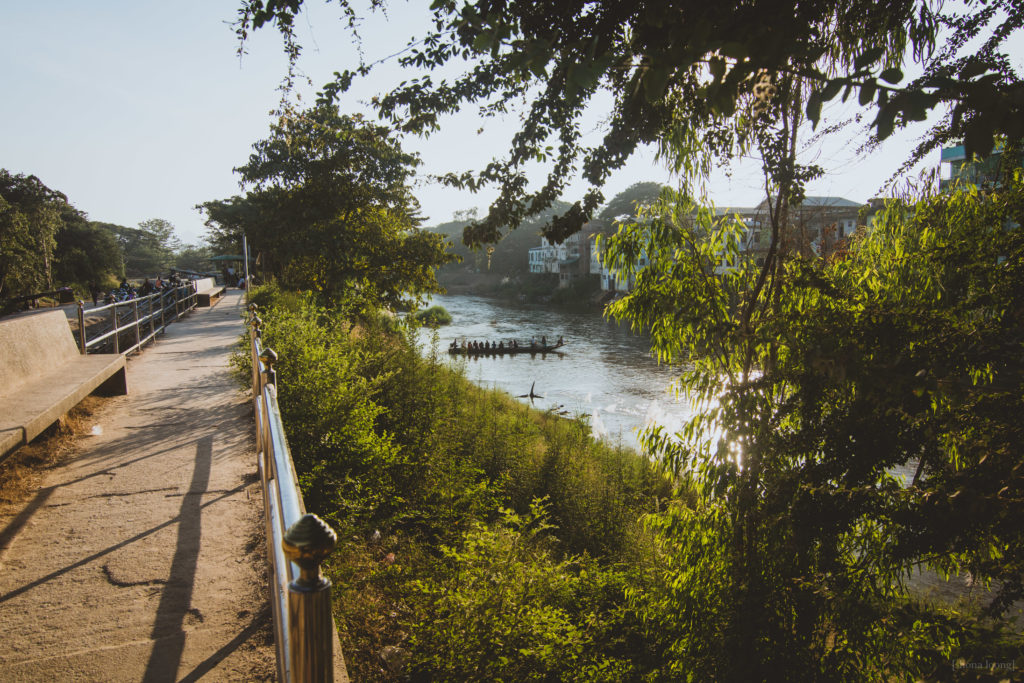
Migrants cross the Moei River.
The Friendship Bridge is a crossing point not only for goods, but also for people. My companion points out a bus that passes by: “those are Karen refugees being resettled,” she tells me, “you can tell by the traditional dress they’re wearing. The deadline to register for resettlement in the US passed in 2014, but they’re still processing thousands of applications.” This too is a testament to change. Whereas the US—along with other Western donors—once contributed millions of dollars to the Karen refugee camps on the Thai border, organisations working in the camps now struggle to renew grants as donors prefer to support in-country transitions in Myanmar.
In addition to the camp refugees, the Thai border town of Mae Sot is home to at least 100,000 migrants from Myanmar, many of whom work in nearby farms, factories, and small businesses. New arrivals cross into Thailand every day, perceiving that despite talk of sweeping reforms in Myanmar, economic opportunities have yet to materialise for themselves and their families. In Myawaddy, a friend tells me about the young men who arrive at his language school to learn Thai. To them, proficiency in Thai continues to be seen as a tool for social mobility in a way that the Myanmar language is not: “when you speak Thai,” my friend tells me, “you can get a job in a hotel, or as a translator. You don’t have to do a factory job… Work in Thailand is still safer, better [than work in Myanmar].”
Of course, the presence of migrants in Mae Sot is far from new. For the past 30 years, migrant labour has been the bedrock of the local economy, so much so that Mae Sot has been described as being “built on Burmese sweat”. In this time, a border social system comprising CBOs, migrant labour unions, NGOs, INGOs, and religious groups has been developed that allows migrants to access social services—such as health and education—while in exile.
This system is remarkably comprehensive. Not only are there more than sixty migrant schools active in the Mae Sot area, several organisations serve the migrant education system as a whole, offering support for curriculum development, in-school health screenings, and teacher training. On Saturday mornings I follow the PlayOnside team to a series of football matches that pits local migrant schools against one another. It’s early, but the atmosphere on the field is palpable. Hundreds of students compete against one another in four divisions—“small girls”, “big girls”, “small boys”, and “big boys”—while those who do not play watch eagerly from the sidelines.
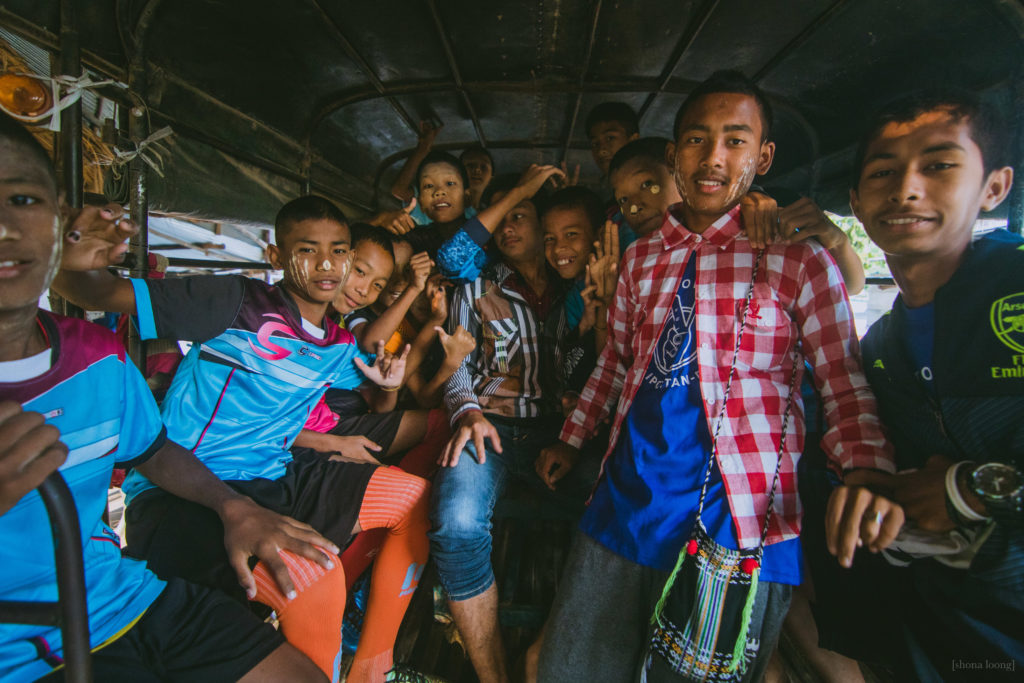
Migrant students en route to a football match organised by PlayOnside.
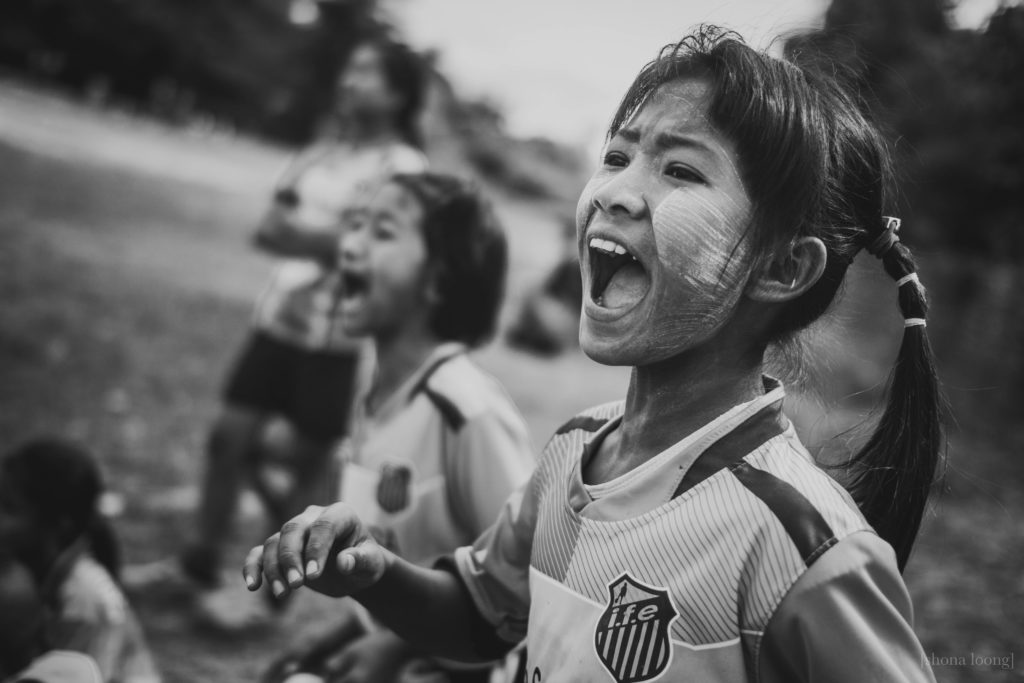
Teams cheer each other on.
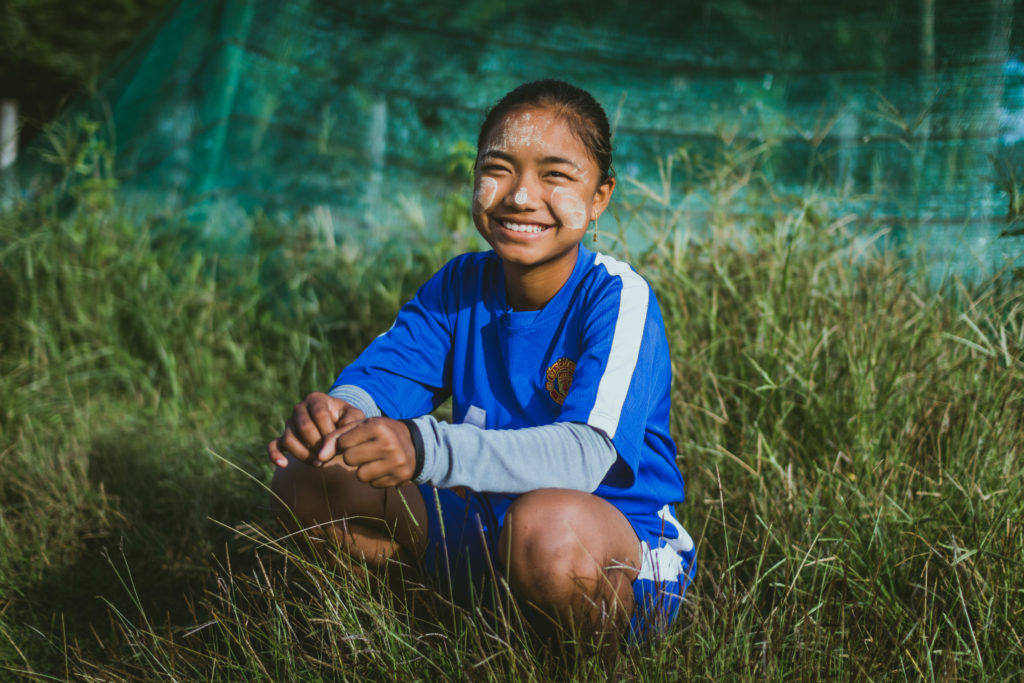
A player in the “big girls” division watches other teams from the sidelines.
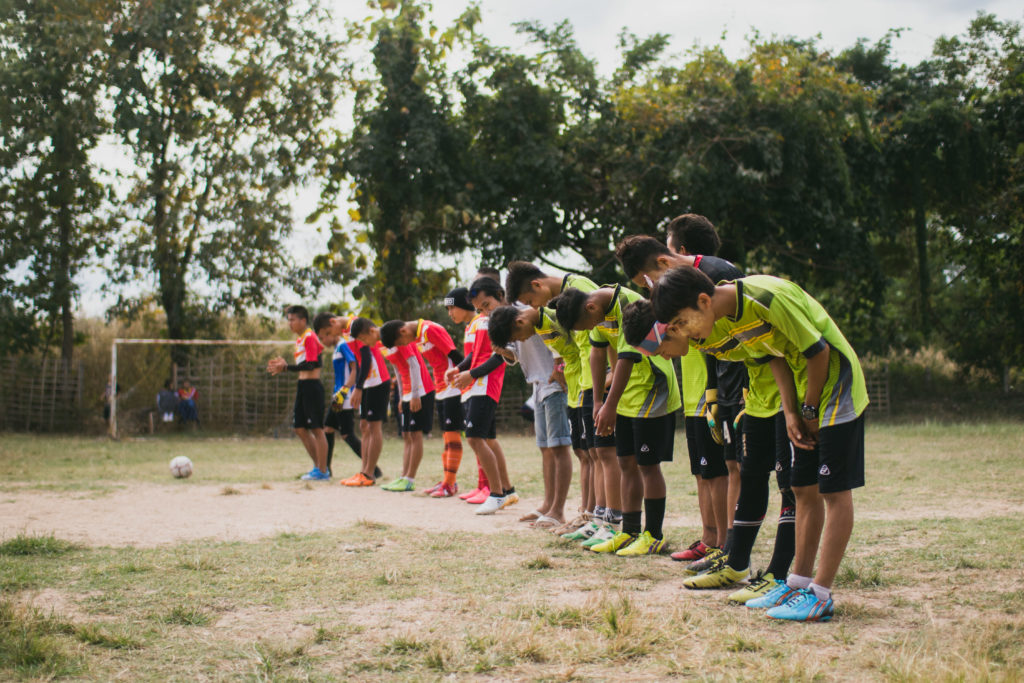
PlayOnside intends for games to promote teamwork, respect, and leadership.
There are pep talks from coaches, victory chants, and consoling hugs. It is easy to forget that many of these migrant students lead a precarious existence: many hold no documentation other than a locally-issued student card, and are at risk of poverty and exploitation. Organisations like PlayOnside therefore allow undocumented migrants to assemble what the anthropologist Stef Jansen calls a “normal life” within the “grids of the state”. Football games encourage teamwork, leadership, and gender equality in a context where migrant students would otherwise have been subject to alienation and anomie.
Millennia-long histories and Burmese migrations into Thailand
It’s time to take a longer view on a complex issue, writes TF Rhoden.
Inasmuch as migrants can access some semblance of support for themselves and their families through CBOs and NGOs, these organisations cannot replicate the protections of a state. This is why the fact that border-based organisations—like their counterparts in the refugee camps—are struggling to renew grants is so troubling. The resultant closure of migrant schools not only deprives children of an education, but also of innumerable psychosocial benefits.
In spite of these funding cuts, migrants remain reluctant to return home. Ethnic minority migrants in particular point to ongoing violence in Rakhine, Kachin, and northern Shan States as evidence that Myanmar is not ready to accept their return. On International Migrants Day, I watch a play put up by several CBOs meant to portray the risks of child trafficking. The play has its lighter moments, but as actors meant to portray the Tatmadaw come onstage I am reminded that many migrants have experienced violence at the hands of the state. If Myanmar seeks to welcome migrants home to spur on its economy, it must first make a sincere attempt to earn the trust of its ethnic minorities.
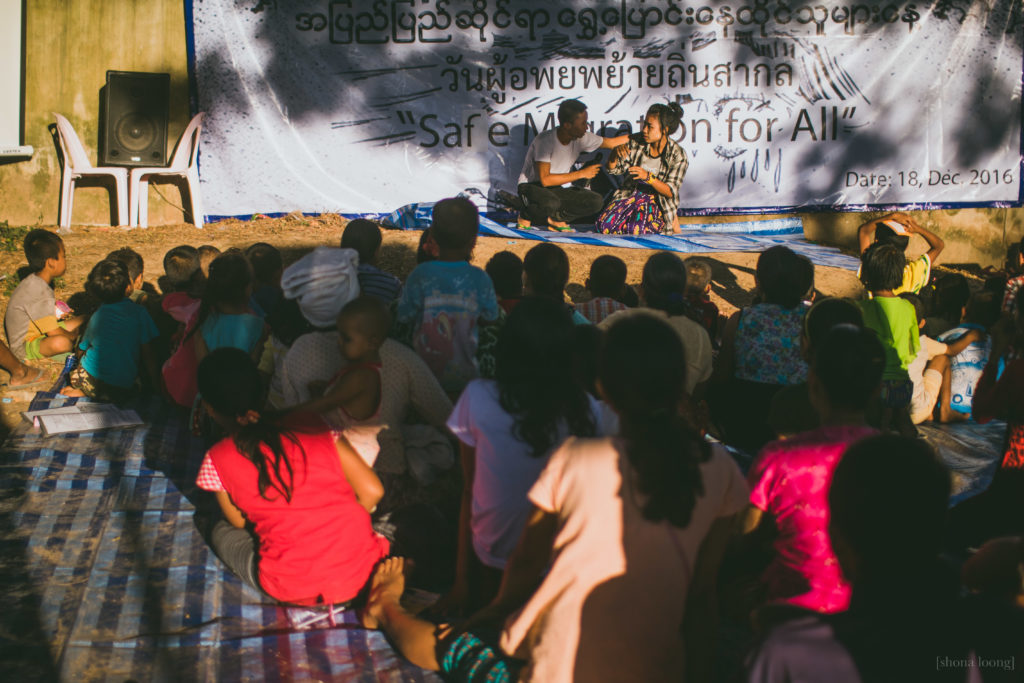
Local CBOs put on a play as part of International Migrants Day.
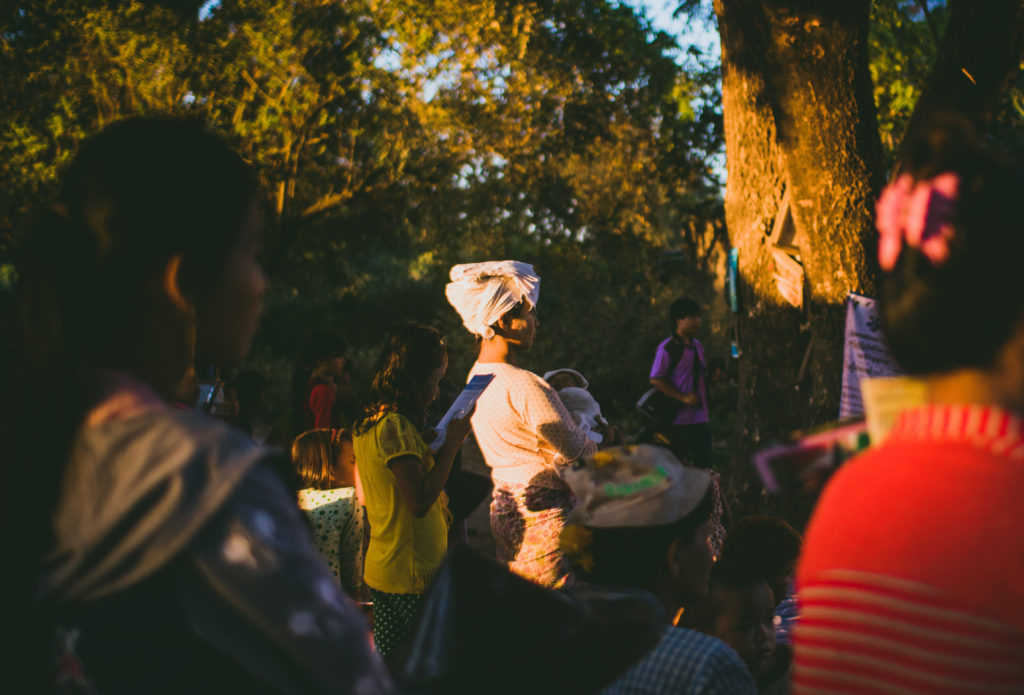
Migrant families gather to watch the play.
This is why recent fighting between the Tatmadaw and the Karen National Liberation Army (the armed wing of the KNU) in northern Karen State should be taken seriously by donors. Between 4–8 March 2018, clashes displaced over 1,700 villagers in the area. The KNLA has accused the Tatmadaw of breaching the Nationwide Ceasefire Agreement, which the KNU and the Tatmadaw signed in 2015. These clashes are likely to undo the local community’s faith in the peace process: many had only recently returned to the area. As for hundreds of thousands of migrants who watch tersely from Thailand, this is yet another sign that Myanmar’s halting peace process cannot be trusted. In Mae Sot, a Shan migrant student once told me about his desire to return to Myanmar, but that he was he was waiting for “real peace. Not just sign[atures].” Similarly, these clashes evoke a grave mismatch between high-handed agreements and realities on the ground.
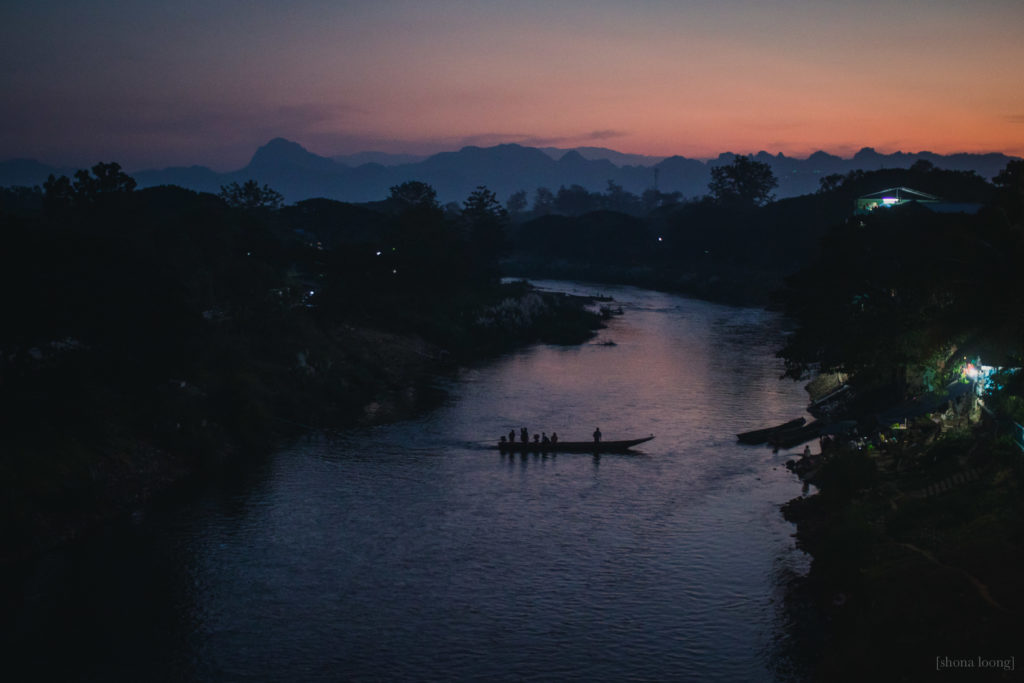
Dusk over the Thai-Myanmar border, as seen from the Friendship Bridge.
Indeed, as Thailand and Myanmar patch up a historically fraught relationship, the future of the hundreds of thousands of migrants residing in Thailand becomes increasingly foreclosed. Migrants may be key to the realisation of the Thai state’s plans for border development, yet these plans value migrants only for the labour they contribute. What of their families, children, and the social system they have established in Mae Sot? With the withdrawal of international aid from border-based CBOs and NGOs, this safety net itself—and the limited forms of support it provides—becomes increasingly threatened.
 Facebook
Facebook  Twitter
Twitter  Soundcloud
Soundcloud  Youtube
Youtube  Rss
Rss 
